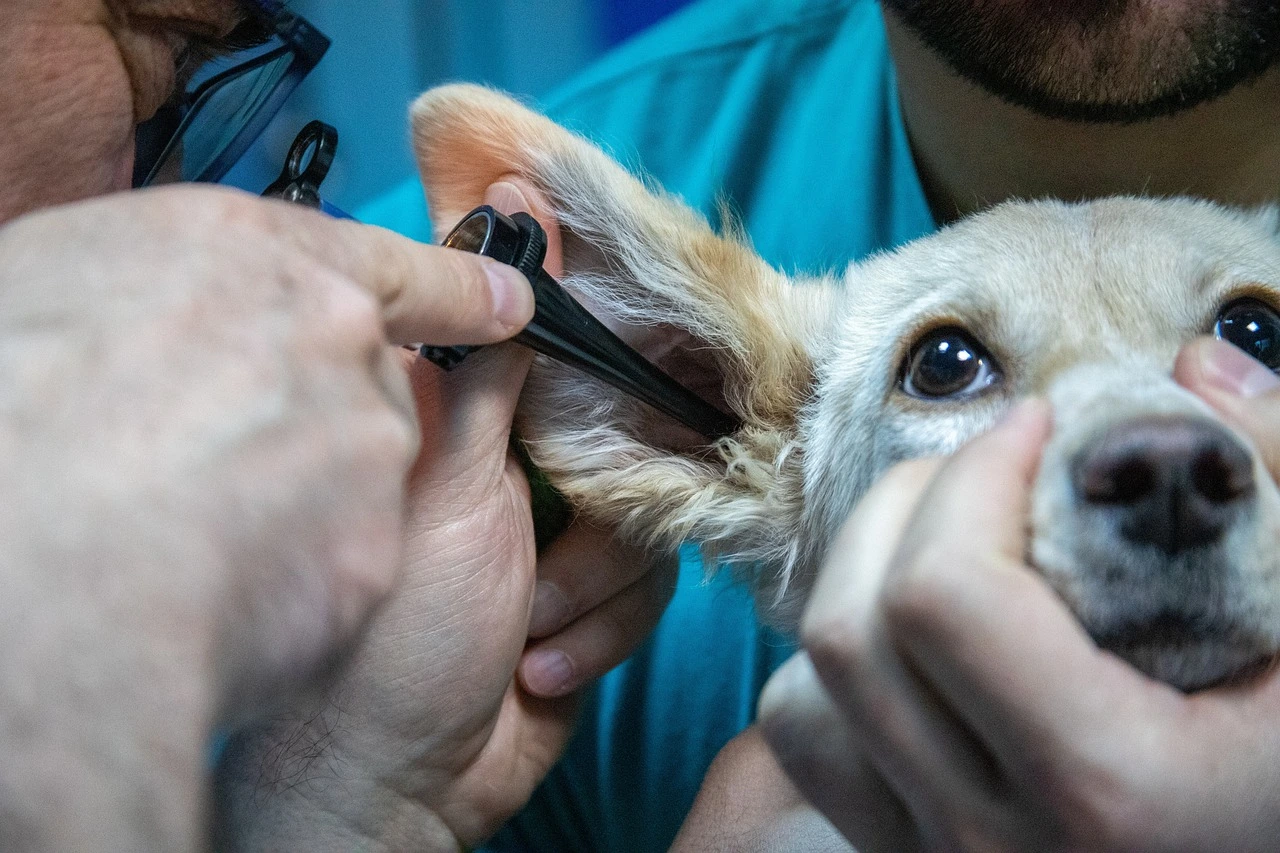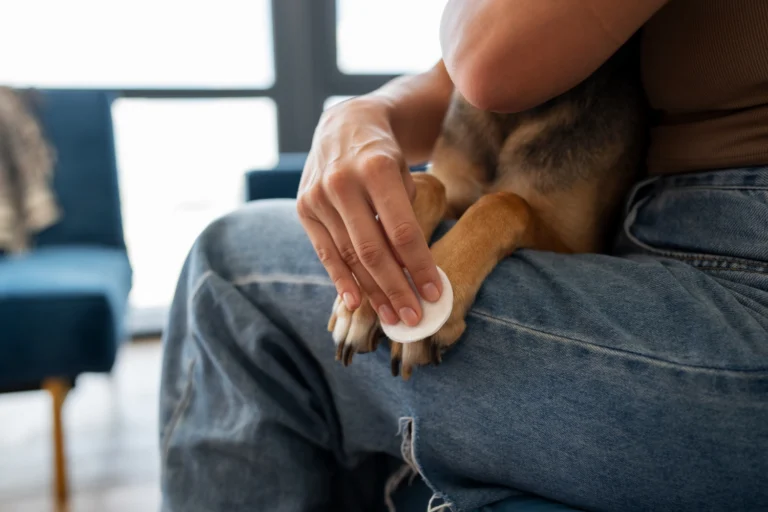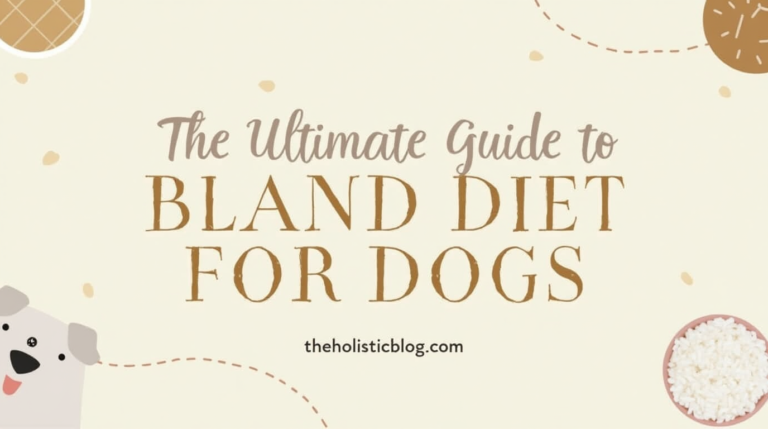Dog Yeast Infection Home Remedy : 4 Powerful ingredients
Table of Contents
Seeing Your Dog in Discomfort—A Personal Journey
If you’re reading this, you may have already seen the signs of a dog yeast infection: constant itching, redness, and an unpleasant odor. Watching your furry friend suffer can be heartbreaking, and as pet owners, we always want to help our dogs feel better as quickly as possible. Yeast infections in dogs, often caused by an overgrowth of Malassezia, are relatively common and can cause a great deal of discomfort. Whether it’s in your dog’s ears, paws, or skin folds, the symptoms can be distressing not only for them but for you as well.
The good news is Dog Yeast Infection Home Remedy can be a game changer . You don’t always have to turn to expensive treatments or harsh chemicals to help your dog feel better. There are several natural and effective home remedies you can try to treat and prevent yeast infections in your dog. In this article, you’ll learn about these home remedies, the causes and symptoms of yeast infections, and how to safely apply these solutions at home.
What is a Dog Yeast Infection?
Understanding Yeast Infections in Dogs
A yeast infection in dogs is caused by an overgrowth of a naturally occurring fungus known as Malassezia pachydermatis. This fungus lives on your dog’s skin and in their ears in small amounts, but when the conditions are right (moisture, imbalance, etc.), it can grow uncontrollably, leading to an infection.
Common Areas Affected:
- Ears: Yeast thrives in warm, moist environments, so dog ears are a prime target.
- Paws: Dogs who lick or chew their paws excessively can develop yeast infections here.
- Skin Folds: Dogs with wrinkled skin, such as Bulldogs and Shar Peis, are more prone to infections in these areas.
What Causes Yeast Overgrowth?
- Moisture: Wet fur or skin, particularly in folds, can create the perfect environment for yeast to thrive.
- Antibiotics: Antibiotics kill both good and bad bacteria, disrupting your dog’s natural microbiome and encouraging yeast growth.
- Poor Diet: Diets high in sugars or carbohydrates can fuel yeast growth.
- Underlying Health Conditions: Conditions like allergies, hypothyroidism, or weakened immune systems can increase the risk of yeast infections.
How to Identify a Yeast Infection in Your Dog
Recognizing the symptoms of a yeast infection early is crucial to preventing it from worsening. Look out for these common signs:
- Excessive Scratching: If your dog is scratching more than usual, particularly in areas like their ears, paws, or groin, it could be a sign of a yeast infection.
- Foul Odor: Yeast infections often have a distinct, musty smell. If your dog’s ears or skin start to have this odor, it’s a red flag.
- Inflammation and Redness: Infected areas may appear red, inflamed, or even greasy to the touch.
- Hair Loss: Yeast infections can cause hair to fall out in patches, particularly on the skin.
- Discharge: In ear infections, a thick, dark, or yellow discharge may appear.
Natural Dog Yeast Infection Home Remedy Solutions
1. Apple Cider Vinegar: A Powerful Antifungal Solution
Apple cider vinegar (ACV) is a natural, readily available remedy for yeast infections. It’s packed with antifungal and antibacterial properties, which can help restore your dog’s skin to its natural pH balance and inhibit the overgrowth of yeast.
How to Use:
- Ear Infection: Dilute the ACV with water in a 1:1 ratio, then gently apply it to your dog’s ears using a cotton ball or dropper. Avoid getting it in your dog’s eyes.
- Skin Infection: Apply the diluted ACV to affected skin areas using a spray bottle or cotton ball. Be sure to avoid open sores.
Precautions:
- Test First: Before applying to a large area, test on a small patch of skin to ensure there is no irritation.
- Avoid Open Wounds: Never apply undiluted ACV directly to broken or open skin.
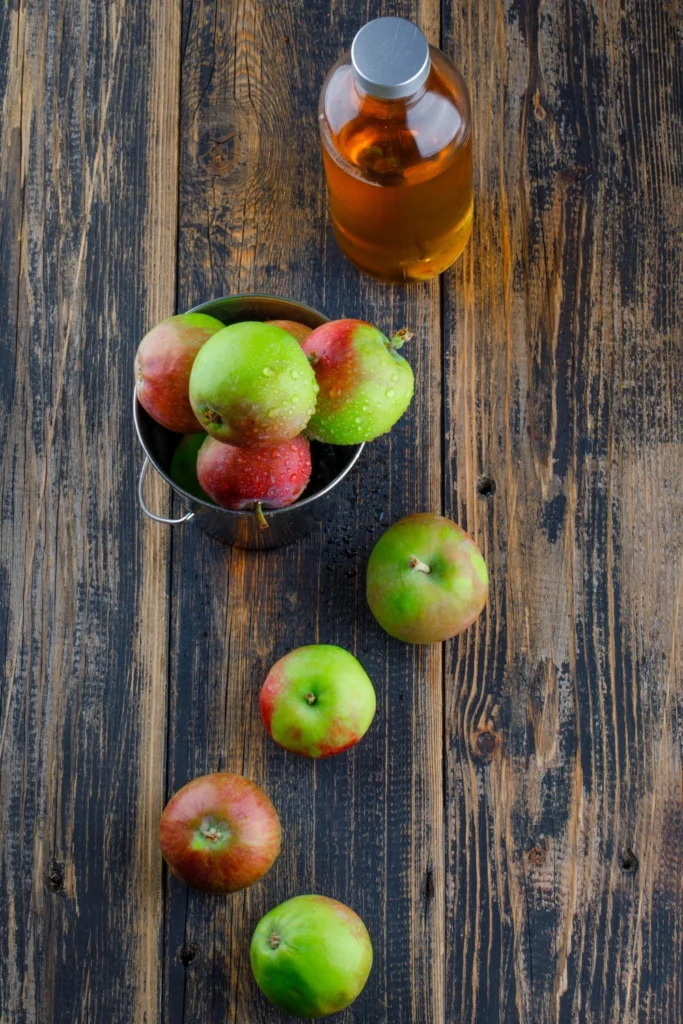
2. Coconut Oil: A Moisturizing and Antifungal Remedy
Coconut oil is a fantastic natural treatment for yeast infections. It has antifungal properties, is soothing to the skin, and helps moisturize areas that may be dry or cracked due to infection. Plus, it’s safe for dogs to ingest in moderation, so it can have both internal and external benefits.
How to Use:
- Topical Application: Gently rub coconut oil directly onto infected areas of your dog’s skin. Apply to areas like the paws, ears, or skin folds, which are common spots for infections.
- Internal Use: You can also add a small amount of coconut oil to your dog’s food (typically 1 teaspoon per 10 pounds of body weight) to help with internal yeast overgrowth.
Precautions:
- Monitor for Stomach Upset: Some dogs may have sensitive stomachs, so start with a small amount and monitor for any digestive issues.
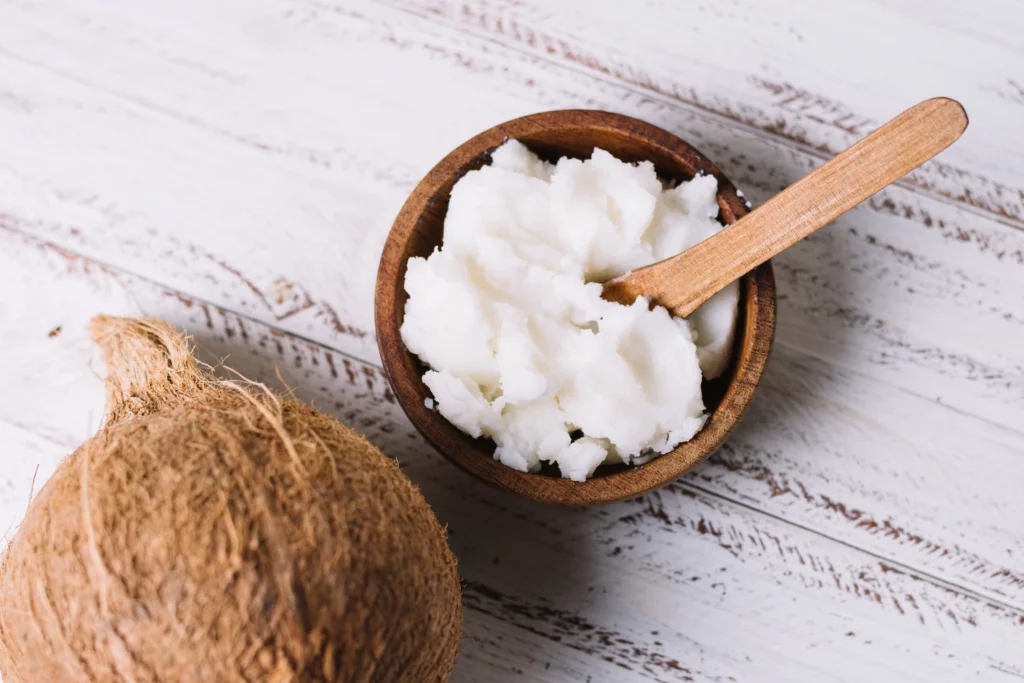
3. Probiotics: Helping Your Dog’s Gut and Skin
Just like in humans, probiotics help restore the balance of healthy bacteria in your dog’s gut. Since yeast infections can sometimes stem from an imbalance in the digestive system, adding probiotics to your dog’s diet can be an effective way to treat yeast from the inside out.
How to Use:
- Supplements: There are dog-specific probiotic supplements available in powders, capsules, or chewable form. Mix the suggested amount into your dog’s food.
- Natural Probiotics: If your dog tolerates dairy, you can also try adding a bit of plain yogurt to their meals.
Precautions:
- Consult Your Vet: Always talk to your veterinarian before introducing new supplements to your dog’s diet, especially if they have health conditions.
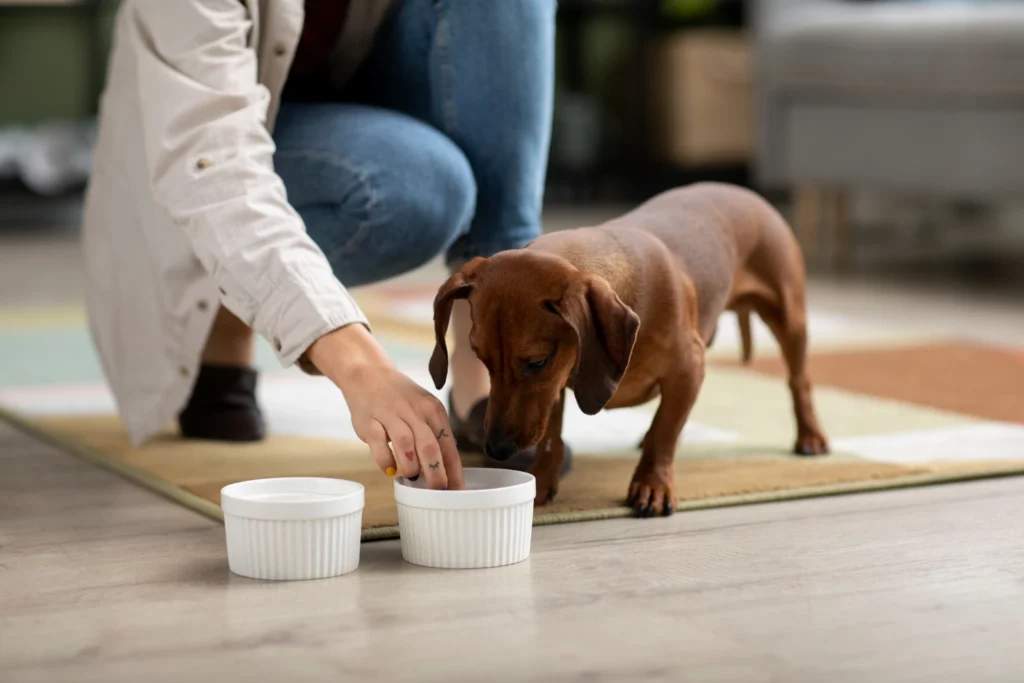
4. Aloe Vera: Soothing and Healing for Skin Infections
Aloe vera is well-known for its soothing properties. It’s especially beneficial for dogs with yeast infections in areas where the skin may be irritated or inflamed.
How to Use:
- Topical Application: Use fresh aloe vera gel (or pure aloe vera gel if using store-bought) and apply it directly to the affected skin. Keep it away from your dog’s eyes and mouth.
- Cool Compress: You can also soak a cloth in aloe vera gel or juice and apply it as a compress to irritated areas for cooling relief.
Precautions:
- Check for Sensitivity: Some dogs may be sensitive to aloe vera. Always test it on a small patch of skin before using it extensively.
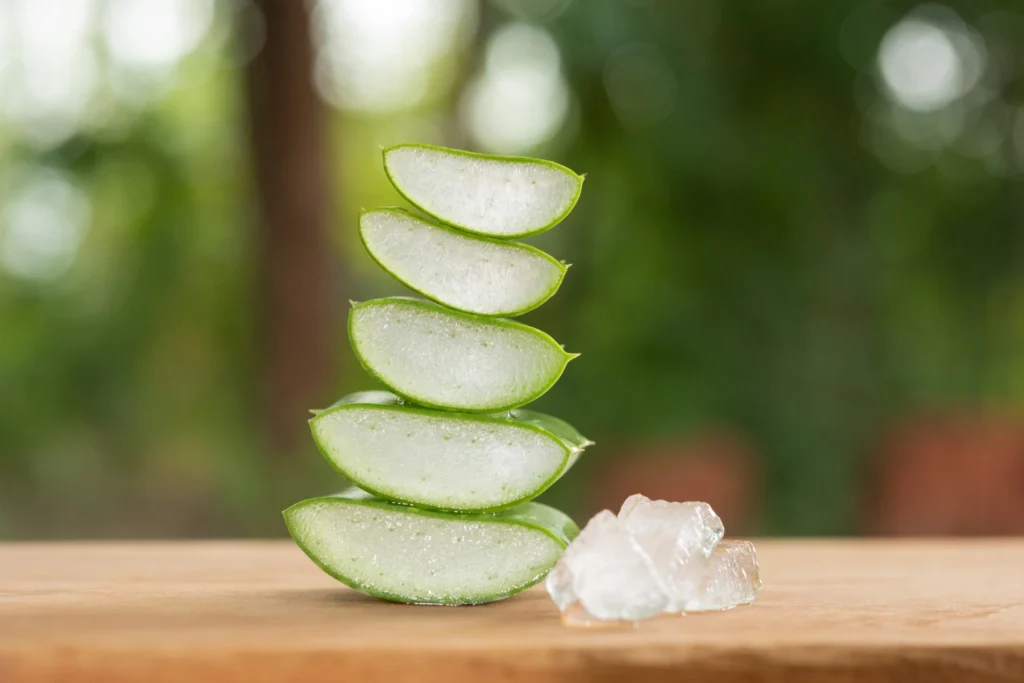
Preventing Yeast Infections in Dogs
1. Maintain Clean and Dry Skin
Since moisture promotes yeast growth, it’s essential to keep your dog’s skin clean and dry. After walks in the rain or a bath, make sure to dry your dog thoroughly, especially in areas like the ears, paws, and skin folds.
2. Balanced Diet
A nutritious diet plays a significant role in your dog’s overall health and immune system. Avoid foods that are high in sugar and opt for a high-quality, balanced dog food that supports a healthy gut and skin.
3. Regular Ear and Skin Care
Dogs with floppy ears or lots of skin folds are more prone to yeast infections. Make it a habit to clean your dog’s ears regularly and check for signs of infection. For dogs with skin folds, clean and dry these areas to prevent moisture buildup.
When to See a Vet for Your Dog’s Yeast Infection
While home remedies can be highly effective for mild yeast infections, there are situations where a visit to the vet is necessary:
- Persistent Symptoms: If the infection doesn’t improve after a few days of treatment, or if it worsens, consult a vet.
- Severe Pain or Discomfort: If your dog seems to be in extreme pain, has difficulty walking, or is exhibiting other signs of distress, it’s time to seek professional help.
- Recurring Infections: If your dog suffers from recurrent yeast infections, there may be an underlying health issue that needs attention.
Conclusion: Your Dog Deserves Relief—Try These Remedies Today
Dealing with a yeast infection in your dog can be frustrating, but with the right home remedies, you can help them feel better naturally. From apple cider vinegar and coconut oil to probiotics and aloe vera, there are many ways to treat and prevent yeast infections in your dog without relying on harsh chemicals or costly treatments. If you notice signs of infection, start by trying these natural remedies, and don’t hesitate to consult your vet if symptoms persist or worsen.
By taking a proactive approach and using safe, natural solutions, you can help your dog feel more comfortable and healthy. Keep an eye on their overall health, and remember that consistency is key when dealing with yeast infections. You and your dog deserve the peace of mind that comes with knowing you’re using effective and natural solutions to care for their well-being.
FAQ Section: Dog Yeast Infection Home Remedy
- What are the symptoms of a yeast infection in dogs?
- Look for excessive itching, redness, a musty odor, discharge from the ears, and hair loss. Common areas affected include the ears, paws, and skin folds.
- Look for excessive itching, redness, a musty odor, discharge from the ears, and hair loss. Common areas affected include the ears, paws, and skin folds.
- Can I use apple cider vinegar for a dog yeast infection?
- Yes, apple cider vinegar has antifungal properties and can be diluted with water to treat yeast infections. Always test for irritation before widespread use.
- Yes, apple cider vinegar has antifungal properties and can be diluted with water to treat yeast infections. Always test for irritation before widespread use.
- Is coconut oil safe for dogs suffering from yeast infections?
- Yes, coconut oil has antifungal properties and can be applied to the skin or added to your dog’s food in moderation.
- Yes, coconut oil has antifungal properties and can be applied to the skin or added to your dog’s food in moderation.
- What steps can I take to prevent yeast infections in my dog?
- Regularly clean and dry your dog’s skin, maintain a healthy diet, and inspect their ears and skin folds to prevent moisture buildup.
- Regularly clean and dry your dog’s skin, maintain a healthy diet, and inspect their ears and skin folds to prevent moisture buildup.
- When is it necessary to see a vet for my dog’s yeast infection?
- If symptoms persist, worsen, or your dog shows signs of severe discomfort, it’s best to consult a veterinarian. Frequent infections could be a sign of an underlying health issue.
By following these natural remedies and preventive measures, you can help ensure your dog’s well-being and keep them feeling their best.

